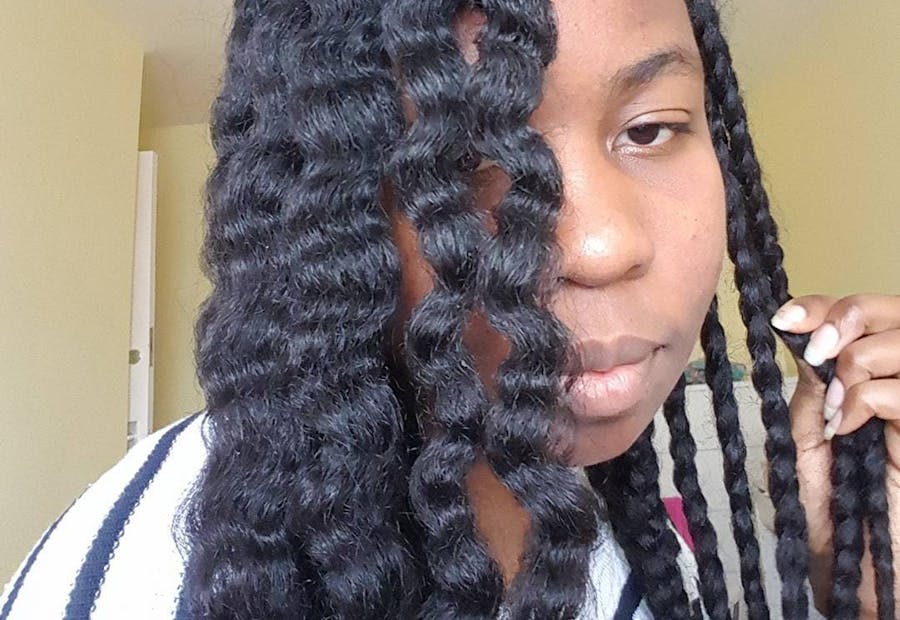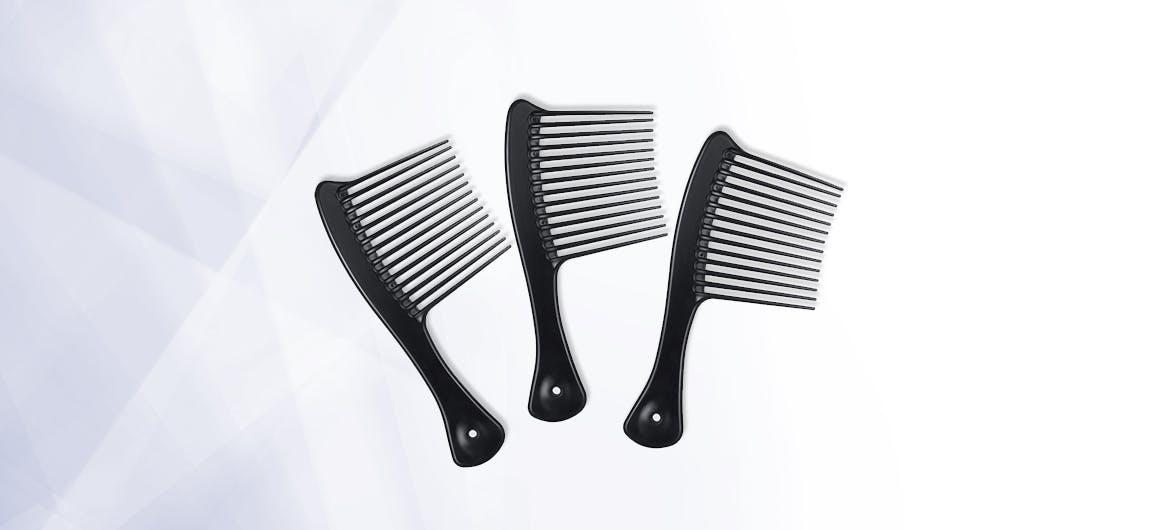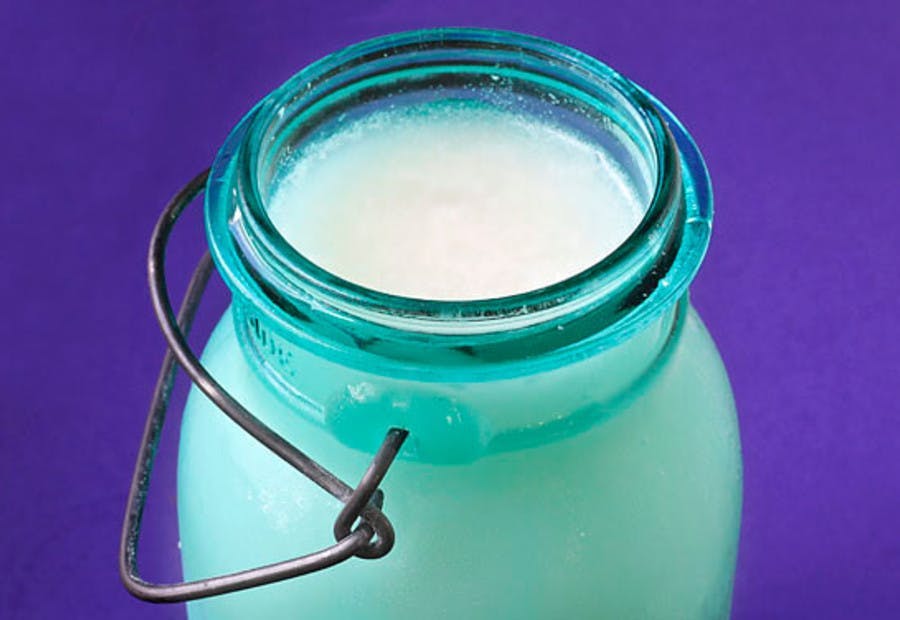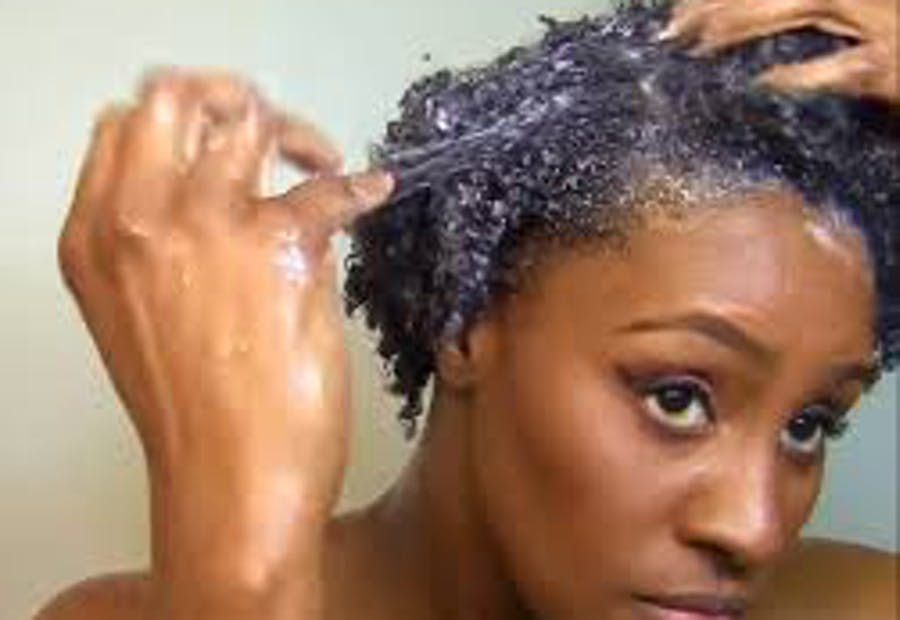
How to Detangle Natural Hair - 4C Matted Black Hair

Hey Naturalistas, welcome back to my blog. So, I've been asked many times how to detangle matted black hair and how to detangle natural hair before washing. Also, many Naturalistas who regularly wear braids are curious about how to detangle afro hair after braids. So, I'm here to offer my tips in this article.
Now, don't be fooled by my hair in the picture. I have 4b and 4c hair mixture. That's my hair it's been detangled, washed, blow-dried, and braided. However, my hair doesn't always look like that. No doubt, keeping afro hair is an empowering experience, but a lot of work goes into making sure your hair is detangled and easy to handle. For starters, detangling hair simply means getting rid of knots, tangles, and fallen hair to make it easy to comb, wash, or style. Also, a good detangling method will help you understand how to stop breakage on natural hair.
That being said, keeping your hair detangled is an essential part of afro hair care and it keeps your hair healthier. If your natural hair won 't grow past shoulders, knowing how to maintain a tangle-free mane will not only guarantee you healthy long locks, but it will also keep your hair from breaking and forming split ends.
More so, detangled hair also protects your cuticles from damage. So, if you have growth and length retention goals, one sure way to achieve this is to keep your hair tangle-free. So, if you have afro hair, keep reading for tips to keep your hair detangled.
Also, check out my article on how to grow natural hair fast if you're looking for more hair growth tips. I have also included an easy to follow video below.
1. Be Gentle on Your Hair
Regardless if you use the best detangler for African American hair, your strands can still suffer. So, the last thing you want to do is to treat them harshly. This is why you need to be gentle on your hair.
Haphazardly and violently detangling your hair will not only fail to get the tangles out, but it will also cause you hair loss and damage.
You have not come this far with your beautiful afro to destroy it; keep that in mind. Your hair deserves a royal treatment, yeah, treat your hair like a crown.
To be gentle on your hair, slowly detangle your strands section by section. Start from the ends and gently work your way up the roots. Your hair’s ends are the oldest and weakest, so you need to be extra careful. Always remember to be gentle and exercise some patience for great results!
2. Never Comb Your Natural Hair Dry
Knowing how to detangle severely matted hair begins with never combing it try. Before you put that wide tooth comb inside your hair, wait. First of all, your hair should be fairly detangled before you attempt to comb it. You can run your fingers through to loosen tight knots and locks to make the combing process easier and less painful.
When it is wet, combining your hair is easier because damp hair is more flexible and less resistant to slipping when combed.
Wet hair has less friction, which is typical of most afro hair types. You can wet your hair by spritzing with water using a spray bottle. If you want to spend a little more, opt for water-based conditioners that will smoothen your hair cuticles and support the roots while combing your hair.
Also, always comb gently since wet hair is more delicate than dry hair. If your hair is severely tangled, consider using a conditioner or coconut oil to finger-comb your hair before combing it. You see, wetting severely tangled hair can make it more tangled.
3. Always Detangle Natural Hair in Sections
You will agree that combing your afro in one huge bunch is not only tricky, but it’s painful and achieves poor detangling results. You may not only end up with chunks of broken hair in your comb but also a burning scalp. An easier way to achieve detangled hair, although more time consuming, is to section your hair before detangling.
You can do this by only running your finger through your hair and dividing it into convenient sections to work with. The number of sections depends on your hair’s bulk, but generally, you can aim for four to eight sections. Twist each section if your afro is long, or use hair clips to hold the sections in place for shorter hair.
Take your hair section by section, undo each twist or clip and gently comb it using a wide-toothed comb. Put each section back into twists or clips when fully detangled and repeat the process until all your sections have been straightened. Style as desired or leave it twisted until you are ready to style the hair. Alternatively, you can pull up a neat bun to keep your hair straightened until you are prepared to rock a new hairstyle.
4. Finger Detangle Natural Hair From End to Root
Finger detangling is great because you also have a chance to remove shredded hair. More so, knowing how to reduce shedding on natural hair just very important to help you further understand the detangling process. Investing in the best conditioners, brushes, and combs do not achieve the best results if you do not know how to comb your hair.
Afro hair is usually kinky and knotty. Getting it all nicely combed out is a skill that must be learned. The rule is always to start combing from the roots, inch by inch. When the roots are straightened, work your way up gently.
When you comb your hair strands from the roots to the ends, you end up putting tension on your hair and scalp. This tension will pull out your strands pulling from the follicle and cause breakage. Less damage is possible with short strokes, from the bottom, and working gradually and gently up.
While combing your hair, use your other hand to firmly hold the lower section of hair near the ends until you get to the roots. You definitely cannot work your way down from your roots if your ends are tangled. Detangling your ends paves the way for a smooth run from root to end.
5. Routinely Wet and Condition Your Hair
This next step is handly especially when learning how to detangle short afro hair. Keeping your hair unwashed and dry for a long time makes it more prone to tangling, kinking, and breaking. You will also need to understand how to wash natural hair to prevent breakage.
First, protect your hair from damage by routinely wetting and conditioning it either weekly or fortnightly. Maintaining a regular schedule is a viable way to prevent tangles. A good homemade leave-in conditioner for hair growth will not only soften your hair but will also make it more flexible to handle.
It provides lubrication, which makes it easier for the strands to slide past each other. Apply conditioner to each section to saturate it, then again, begin with the ends and work your way upwards. Since your ends are the oldest and weakest part of your hair, always pay attention to that part of when conditioning and make sure each strand at the end holds enough moisture. In doing this, you are sure to achieve healthier and revitalized hair.
6. Always Use a Wide Tooth Comb or Your Fingers

Using the right tools for your hair makes detangling a breeze. Opt for a wide-tooth comb or your fingers. A rubber bristled brush like the Denman brush can also keep your hair detangled with less breakage. A wide-toothed comb retains your hair by minimizing breakage and knots. Wide toothed combs can easily slide past your strands with less friction and ease than narrow-toothed combs.
The wider the spaces between the teeth, the better it is for your afro. Using a smaller spaced comb will not only make your detangling experience a teary one but also an unpleasant one. A smaller comb requires more pressure to slide through your hair. This is bound to put undue stress on your hair and cause more knots and breakage. You can also lose your hair from its roots through this process.
7. Loosely Section and Braid Detangled Hair When Not in Style
Afro hair is usually kinky and quick to coil back into its shell when not manipulated. You can avoid this by keeping your afro in braided sections when not styled. Do this at home by using a wide-toothed comb to section your hair into four or more parts. This should be done after a detangling session. Pick your hair section by section and braid into neat twists. If you can’t twist your strands just yet, it is super easy.
Just pick a section and divide it into two parts. With your fingers, gently twirl one part over the other and repeat the process until there is no loose hair left. Twirl the finished end around your index finger to seal the twist and prevent it from unraveling. Repeat this process section by section, until there are no sections left. Voila! Your hair is detangled until you are ready to rock a new style.
8. Protect and Cover Natural Hair While Sleeping
It is crucial to protect your hair when you sleep. To do this, keep your hair in a neat pile or loose braids. Never sleep with your loose afro; otherwise, it will get frizzy and tangled by morning. A sure way to prevent this is to wrap your hair with a satin headscarf. Satin headscarfs will minimize tangling and also protect your hair ends.
It also helps to use a satin pillowcase instead of a cotton one. If you have your hair styled in braids, cornrows, or even a weave on, wrapping your hair in a satin headscarf will maintain your hairstyle and minimize tangles. Similarly, if you treat your hair with a conditioner or oil before bedtime, covering your hair with a satin scarf will help to lock the moisture in. Covered hair after a detangling session is a great way to reduce tangling as you turn and toss while dreaming away on your bed.
9. Always Use Detangling Products with Enough Slip

If you want to know how to detangle short 4c hair, when it comes to detangling your knotted strands, the keyword is slip. This also applies to detanging long 4c hair.
The more slip your hair has, the easier it is to detangle your tresses. Handling hair with enough slip ensures that your strands slide over each other while maintaining moisture and vitality. Afro hair tends to have more friction between strands, making it more challenging to handle when it is dry.
To solve this hurdle, use hair conditioning products with enough slip for a smooth and easy detangling experience. Regardless of whether you're detangling natural hair with coconut oil, plain old olive oil, or your go-to conditioner, use whatever works best for your hair. Your hair should be able to take up and hold enough moisture for lubrication.
Slippery hair is less resistant to your fingers or comb when you slip them through your tresses. Even more, you will have a less painful experience and a finely detangled hair in the end.
To make a good slip, why not try out our olive oil recipe? You can find it on this article titled olive oil deep conditioner for natural hair. Also try our homemade coconut milk deep conditioner for natural hair.
For more homemade recipes, you can also check out my homemade deep conditioner for natural hair growth.
10. Detangle Your Natural Hair Routinely
Regularly and routinely detangle the hair for a more smooth detangling session. If your hair is not in a protective style, work out a regular detangling session to keep it from interlocking and damaging. Even though detangling sessions take hours and a lot of effort, aiming for a regular schedule will minimize the frustration and hair loss associated with hair, which has been coiled and kinky for weeks.
At least aim for a once a week hair detangling session, and remember to work your way gently from tip to root.
Homemade Hair Detangler with Essential Oils
Natural Hair Detangler for Black Hair
For help on which essential oils can help manage your hair, whilst preventing breakage, I have written some articles on:
- Coconut oil for natural hair growth
- Rosemary oil for natural hair growth
- Moringa oil for natural hair growth
- Olive oil for natural hair growth on black hair
- Argan oil for natural hair growth
- Homemade hot oil treatment for natural hair growth
- Castor oil for natural hair growth on black hair
- Hemp oil for natural hair growth
- Best oils for natural hair growth
- Shea butter for natural hair growth
- Best essential oils for natural black hair growth
More Information on the Best Herbal Remedies for Natural Hair Growth
- Chebe powder for natural hair growth
- Fenugreek for natural hair growth
- Ayurvedic herbs for natural hair.
- Herbal oil treatment for natural hair growth
How to Detangle Natural Hair - To Summarise
It is possible to keep your afro hair neatly detangled. It all comes down to applying these simple skills to maintain your strands healthily. In a nutshell, being patient and gentle with your hair, knowing how to grow healthy natural hair also means knowing when and how to comb it, conditioning the right way, sectioning your hair among other mentioned routines are ways to safely detangle your hair with minimal to no damage.
Following these tips paves the way for your dream afro hair - beautifully detangled.
To understand more about your hair, take our Natural hair porosity quiz and try out our Natural hair regimen to promote growth.



